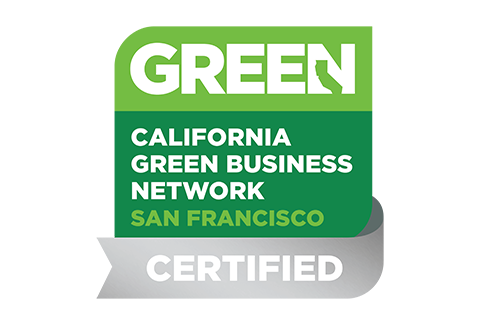Testing California’s Price Gouging Statute
Pandemic-related price spikes in consumer goods have attracted the attention of both government enforcers and private plaintiffs. In California, Attorney General Xavier Becerra has issued two admonitions against price gouging – one focused on online retail platforms,[1] and the other emphasizing that liability attaches to all “sellers” in the supply chain, including manufacturers, wholesalers, and distributors.[2] Private plaintiffs are also taking action. A putative class action was recently filed in the United States District Court for the Northern District of California on behalf of California consumers alleging price gouging of eggs by retailers and other sellers further up the supply chain.
This action, as well as AG Becerra’s warnings, are grounded in Penal Code Section 396, California’s price gouging law. Enacted in 1994 following the Northridge earthquake, the law responded to localized reports of price surges in commodities like eggs, batteries, and plywood in the aftermath of the disaster. The California Legislature enacted Section 396 against this backdrop, seeking to dissuade would be price gougers through both criminal and civil remedies. The history of the statute, its preamble, and the categories of prohibited price increases (hotels, rentals, home building), suggest that a global pandemic was not top of mind.
Despite its breadth and severity, there are no judicial decisions interpreting Section 396 at any level, reported or unreported. The egg class action, however, is likely a harbinger of more to come, given the attention the statute is now receiving from both enforcers and private plaintiffs. This article summarizes the key provisions of Section 396, considers some important ambiguities in the law, and shares thoughts on issues that may affect “seller” liability.
The declaration of a state of emergency by the U.S. president, California’s governor, or local governmental entity triggers Section 396. The statute prohibits price increases for certain goods and services when the increase exceeds 10 percent, based on the price charged immediately prior to the declaration. This 10 percent limit appears to have been chosen arbitrarily, and is stricter than the limits set by other states, which either have higher limits or non-quantitative prohibitions (e.g., against “unconscionable” prices). Section 396 applies to: “consumer food items or goods” and other specified essential items (subsection (b)); repair, reconstruction, and emergency clean-up services (subsection (c)); hotel/motel rates (subsection (d)); and housing rental prices (subsection (e)).[3]
A violation of Section 396 is a misdemeanor punishable by imprisonment up to a year, or a fine up to $10,000, or both. Id. subsection (h). In his April 3 Executive Order N-44-20, California Governor Gavin Newsom clarified that, for certain items, each violation (i.e., each sale) constitutes a separate violation. In addition, a violation of Section 396 is also per se unlawful under California’s Unfair Competition Law, making the statute a potentially powerful tool for private plaintiffs. Id. subsection (i).
The section most applicable to the COVID-19 pandemic regards consumer goods and other essential items. Subsection (b) targets price increases greater than 10 percent in connection with the offer or sale of “consumer food items or goods, goods or services used for emergency cleanup, emergency supplies, medical supplies, home heating oil, building materials, housing, transportation, freight, and storage services, or gasoline or other motor fuels.”[4] The prohibition typically applies for 30 days following the emergency declaration. However, Governor Newsom’s April 3 Executive Order extended the protections of subsection (b) in both directions. While the Governor’s state of emergency proclamation was issued on March 4, the Executive Order proclaims February 4 as the reference date against which subsequent prices are compared. The Executive Order also extends price controls through September 4, 2020.
Private claims under Section 396 and the Unfair Competition Law are potentially large. Presumably, plaintiffs will claim as restitution any price increase in excess of 10 percent that the defendant cannot prove to be directly attributable to additional costs imposed by the supplier or additional labor or material costs. In the egg class action, plaintiffs used this measure for restitution. For large retailers (and other “sellers” up the supply chain like wholesalers, distributors, manufacturers/producers and, potentially, platforms) that charge uniform prices throughout California, actions under Section 396 and the Unfair Competition Law may be particularly amenable to class treatment.
A law that has received scant analysis is about to be parsed with laser focus, especially with regard to potential ambiguities, exceptions, and defenses. Online platforms will likely claim that they do not “sell or offer to sell” goods – instead, they merely provide a market platform to facilitate third-party transactions. This question has received judicial treatment in the product liability setting, with the majority of courts, including in the Northern District of California, agreeing with this argument. Anticipating this argument, plaintiffs may allege claims for “aiding and abetting” and negligence.
For most retailers, however, there is no ambiguity: they are “sellers,” and the statute imposes strict liability. But sellers are not defenseless. Subsection (b) immunizes otherwise unlawful price increases if the seller “can prove” that the increase was “directly attributable to additional costs imposed [] by the supplier of the goods, or directly attributable to additional costs for labor or materials used to provide the services” and “the price is no more than 10 percent greater than the total of the cost to the seller plus the markup customarily applied by the seller…” As an affirmative defense, defendants bear the burden of proof. Therefore, sellers must not only ensure that they themselves are keeping their markups within their customary range, they must also be prepared to prove that higher costs caused any price increase of more than 10 percent.
As to retailers, this statutory defense should close the door to aiding-and-abetting liability in connection with price gouging by a seller up the supply chain. As to platforms, however, an aiding and abetting claim may counter the likely claims of platforms that they are not “sellers.” After all, only entities that sell or offer to sell can take advantage of the subsection (b) defense.
There are several other uncertainties in the scope and application of the statute. As noted above, the California AG has taken the position that all “sellers” of consumer goods, even those who don’t sell directly to consumers, are bound by the statute. But who can bring Unfair Competition Law claims against sellers up the supply chain? Retailers are unlikely to do so for business reasons. Consumers are unlikely to have evidence of the pricing practices of other sellers up the supply chain (e.g., wholesalers, distributors, and manufacturers/producers), and complications may arise in connection with efforts to obtain restitution from sellers with whom consumers are not in privity. Neither of these concerns stopped the plaintiffs in the egg case, who appeared to name multiple sellers in the supply chain while admitting that they did not know who was price gouging because plaintiffs lacked the necessary information. While pleading with greater specificity may be required to survive dismissal, both state and federal courts may be sympathetic to plaintiffs pleading on information and belief where the evidence is exclusively in the control of defendants.
Another ambiguity is whether the allowance in the subsection (b) defense for “ordinary markup” is expressed in absolute or percentage terms. For instance, as to a good that normally costs the retailer $10 to produce and is sold for $12, will the “customary mark-up” be limited to $2 or 20%? If the good now costs the retailer $20 to produce, should the “customary mark-up” be $2 (for a new retail price of $22) or the 20% ratio (for a new retail price of $24)? Although “markup” is typically considered in a business context to be a percentage-based measure of profit, there is no certainty that a court would see it the same way.
As to all of these ambiguities, there is also a larger question regarding how strictly the statute should be construed. The normal rule of lenity for applying criminal statutes is in tension with subsection (a) of Section 396 directing that “it is the intent of the Legislature that this section be liberally construed.”
Seller liability may turn on a number of practical considerations as well. Sellers without sufficient documentation of transactions from February 4, 2020 onward, including both purchases from suppliers and sales to consumers (or other buyers), may face difficulties in proving that price increases were caused by higher costs. Relevant documentation could include cost of goods from the supplier, other costs, seller markup, and final price to the buyer. Sellers might consider a conservative interpretation of whether they calculate markups on an absolute or percentage basis. Automatic pricing algorithms, or indexed pricing, could be reviewed for statutory compliance. Within the supply chain, sellers could proactively communicate with their suppliers about any present or expected price increases, including explanations and/or documentation from suppliers regarding any price increases. Finally, sellers should accept the California Attorney General’s invitation to report suspected price gouging, including in the seller’s own supply chain.
Like the COVID-19 pandemic itself, much about the application of Penal Code Section 396 remains uncertain. However, one thing is not: in light of the potentially enormous criminal and civil exposure created by relatively modest price fluctuations in a turbulent economic environment, the statute is ripe for testing.
[1] https://oag.ca.gov/news/press-releases/attorney-general-becerra-calls-online-marketplaces-their-game-combat-covid-19.
[2] https://oag.ca.gov/news/press-releases/attorney-general-becerra-reminds-wholesalers-and-manufacturers-they-are-subject.
[3] Section 396 also imposes a 30-day moratorium on evictions. See id. subsection (f).
[4] “Consumer food items” are defined as “any article that is used or intended for use for food, drink, confection, or condiment by a person or animal.” Id. subsection (j)(3). Therefore, Section 396’s protections would also apply to pet food.


